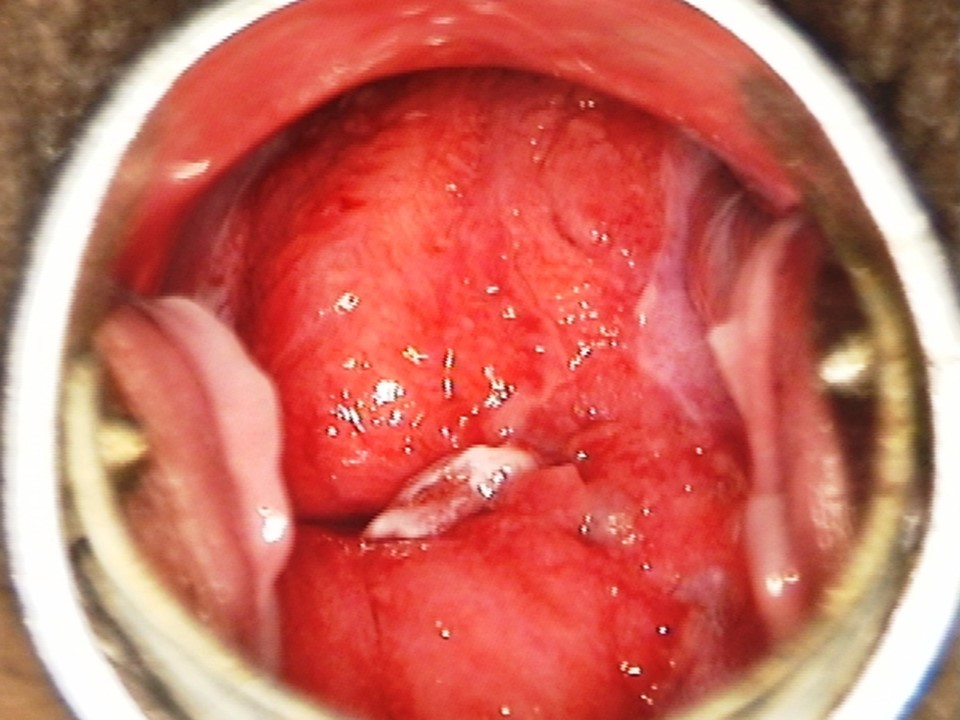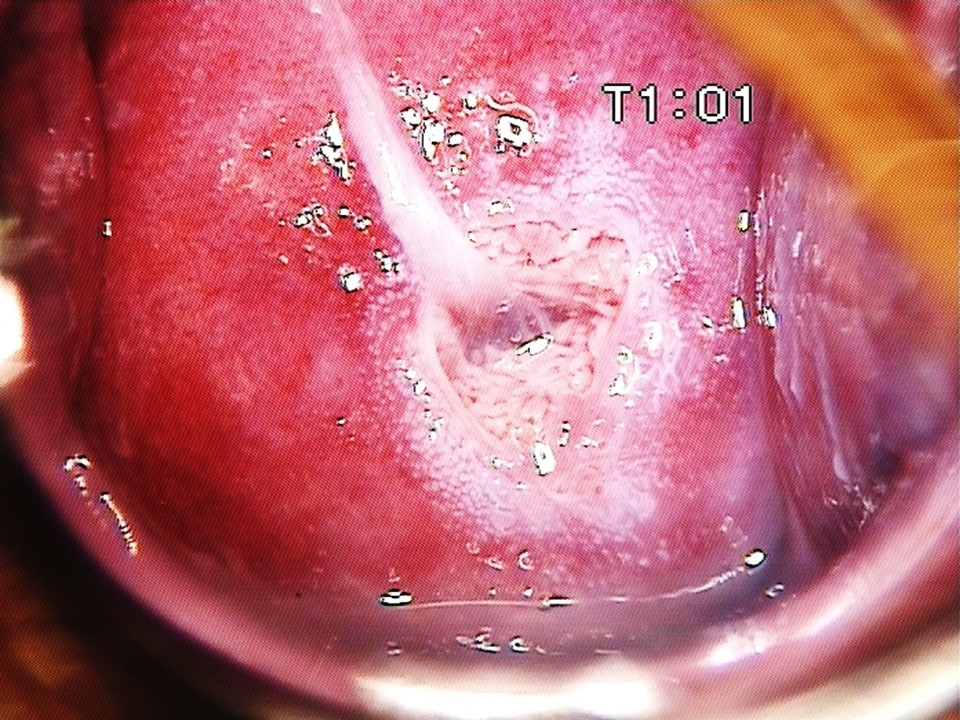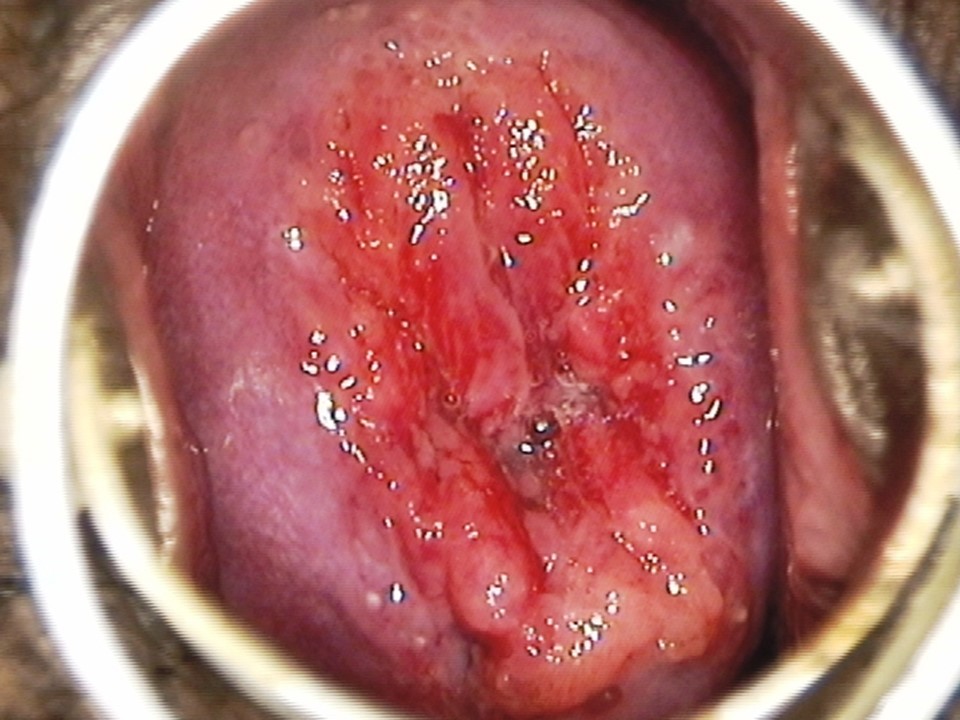Using Human Papillomavirus (HPV) detection tests for cervical cancer screening and managing HPV-positive women – a practical guide / Activity 2
Physiological changes of the cervical epithelium – Changes induced by pregnancy | Click on the pictures to magnify and display the legends |
During pregnancy, the cervix is enlarged, soft, and congested. Because of the high levels of estrogen, there is hypertrophy of the cervical stroma, leading to enlargement of the cervix. This leads to eversion of the hypertrophied columnar epithelium onto the ectocervix (ectropion). Depending on the gestational age, the SCJ lies at a variable distance from the external os. The secretion of mucin by the columnar epithelium increases, resulting in copious mucus production and often leading to the formation of a thick mucus plug. The cervical stroma may undergo focal decidual changes in response to the hormones released during pregnancy. The hypertrophied columnar crypts due to the decidual reactions appear as polypoid protrusions (pseudopolyps or decidual polyps) on the cervix. Cervical screening is usually avoided during pregnancy.
The next section discusses the atrophic changes of the cervix that usually occur after menopause. |


